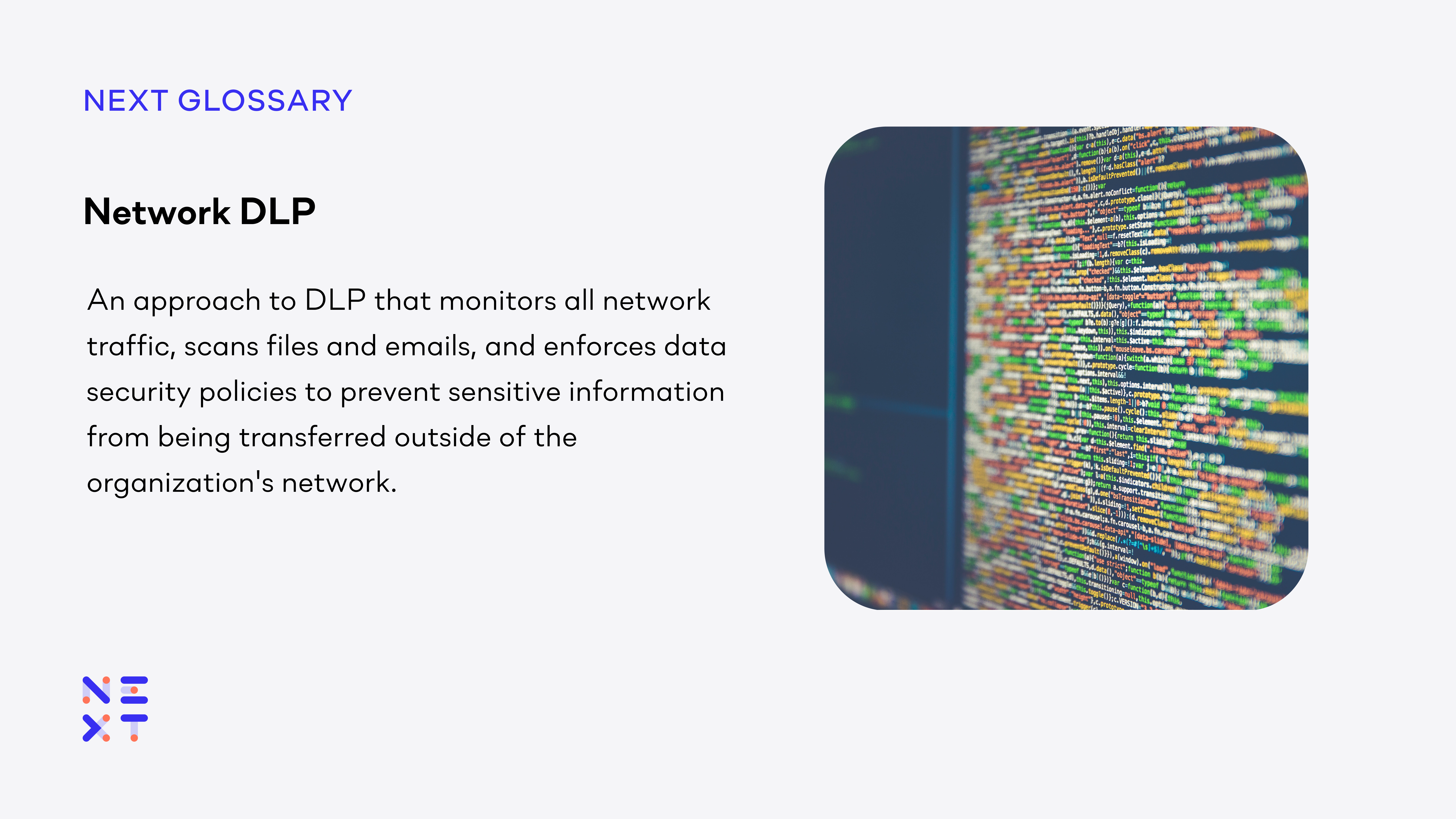Network DLP (data loss prevention) refers to a set of security measures and technologies designed to prevent the loss or unauthorized disclosure of sensitive data as it traverses a network. It aims to identify, monitor, and control the movement of sensitive information across network boundaries, including both internal and external networks.

Importance of Network DLP
Network DLP plays a crucial role in safeguarding organizations against data breaches, intellectual property theft, regulatory non-compliance, and reputational damage. By monitoring network traffic and enforcing policies, it helps organizations maintain data confidentiality, integrity, and availability.
How it works:
- Detection and Classification:
Network DLP solutions employ advanced detection techniques to identify sensitive data within network traffic. This may include personally identifiable information (PII), financial data, intellectual property, or confidential business information. Machine learning algorithms and pattern matching are often used to classify and tag sensitive data for further analysis and protection.
- Data Monitoring and Inspection:
Network DLP solutions monitor network traffic in real-time, inspecting data packets for sensitive information. They analyze both inbound and outbound traffic, identifying potential threats, policy violations, or unauthorized transfers of data. By examining the content of emails, files, web requests, and other communication channels, network DLP can enforce security policies and prevent data leakage.
- Policy Enforcement:
Network DLP enables organizations to define and enforce data security policies tailored to their specific needs. Policies may include rules for blocking, encrypting, or quarantining data based on its content, origin, destination, or user context. By establishing granular policies, organizations can ensure that sensitive data is protected while allowing appropriate data sharing and collaboration.
- Encryption and Anonymization:
To secure data in transit, Network DLP solutions often incorporate encryption mechanisms. By encrypting sensitive data, even if intercepted, it remains unreadable to unauthorized individuals. Additionally, anonymization techniques can be applied to replace sensitive data with placeholder values, maintaining data utility while protecting privacy.
- Incident Response and Forensics:
Network DLP systems provide valuable insights for incident response and forensic investigations. In the event of a security incident or data breach, detailed logs and alerts generated by the network DLP solution can help identify the source of the breach, the affected data, and the actions taken. This information is vital for mitigating the impact of the breach and strengthening security measures.
- Compliance and Regulatory Requirements:
Network DLP is crucial for organizations operating in industries with strict compliance and regulatory requirements, such as healthcare, finance, or government sectors. By implementing network DLP solutions, organizations can demonstrate due diligence in protecting sensitive data, ensuring compliance with regulations like the Health Insurance Portability and Accountability Act (HIPAA), General Data Protection Regulation (GDPR), or Payment Card Industry Data Security Standard (PCI DSS).
- Employee Awareness and Training:
While technology is a vital component of network DLP, employee awareness and training are equally important. Organizations should educate their employees about data security best practices, the importance of handling sensitive data responsibly, and the consequences of data breaches. Training programs can help employees understand the role they play in maintaining network security and avoiding data leakage incidents.
- Continuous Monitoring and Adaptation:
Network DLP is an ongoing process that requires continuous monitoring and adaptation. Cyber threats evolve rapidly, and new vulnerabilities emerge regularly. It is crucial for organizations to stay up to date with the latest threat intelligence, regularly review and update security policies, and adjust network DLP configurations to address emerging risks.
- Performance and Scalability:
Network DLP solutions should be designed to minimize impact on network performance while maintaining effective data protection. Efficient algorithms, hardware acceleration, and optimized configurations ensure that network DLP operates seamlessly even in high-volume network environments.
- Risk Assessment and Data Discovery:
Before implementing network DLP, organizations should conduct a thorough risk assessment and data discovery process. This helps identifholiy the types of sensitive data present in the network, understand data flows, and determine areas of high risk. This information informs the design and implementation of appropriate network DLP policies and controls.
- Data Governance and Data Lifecycle Management:
Network DLP should be integrated into a broader data governance and data lifecycle management framework. This includes defining data ownership, data classification, retention policies, and secure data disposal procedures. Network DLP can help enforce these policies, ensuring that data is protected throughout its lifecycle.
Network DLP is a critical cybersecurity measure for organizations aiming to protect sensitive data from unauthorized access and disclosure across their network infrastructure. By implementing comprehensive detection, monitoring, policy enforcement, and incident response capabilities, organizations can enhance their data security posture and comply with regulatory requirements. Network DLP should be integrated into a holistic cybersecurity strategy that encompasses employee awareness, continuous monitoring, and adaptive measures to effectively mitigate the risks posed by evolving cyber threats.

